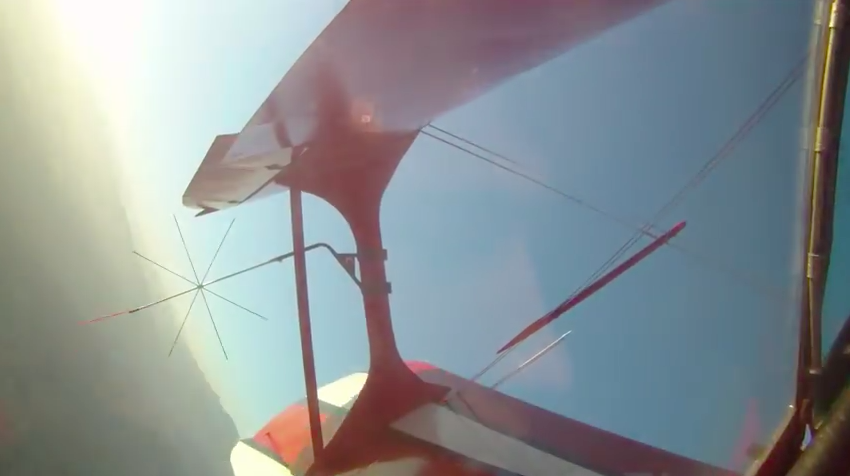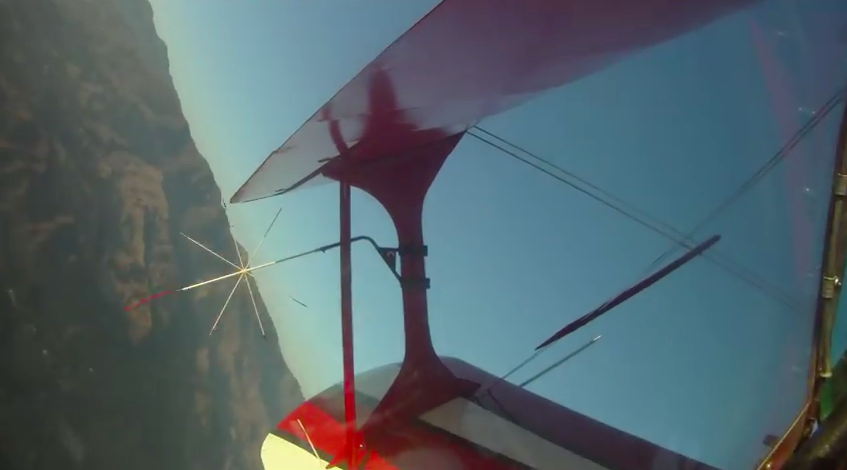Torque Roll
The torque roll is an advanced aerobatic maneuver that is demanding
on the pilot and airplane. From the ground, the pilot appears to
abruptly pull to a vertical climb and roll rapidly and continuously on
the line until the airplane runs out of speed. Then, the airplane will continue to roll as it falls
backwards on the line it climbed up on.
Impressive... How's It Done?
To explain the torque roll step by step, I will use annotated stills from a video of Sammy Mason, a fellow aerobatic pilot from my hometown airport who also happens to be a world champion pilot, preforming a torque roll in his Pitts Special S1-S.

Sammy begins with a vertical line beginning at high speed. Notice the red string on the end of the sight gauge (star shaped metal bit); it is pushed back by the passing wind right now, but that will change later.

Notice the ailerons at the end of the wings are deflected. The airplane is now rotating at just over 180° per second, a notable amount of angular momentum for the next portion of the maneuver.

Here, the airplane has just run out of speed and is hanging on a point in the air. The ailerons are no longer deflected, because the torque from the engine alone is enough to maintain the rotation

Now the airplane is continuing the rotation while it slides
backwards (notice the reversal of the string). This also proves that
the torque is rotating the airplane, as the airplane would have started
rolling in the opposite direction due to the reversed airflow if a
regular control surface were behind the roll.
What If The Engine Were Idling?
Ah, that's called a tailslide.
Tailslides are simply the airplane falling backwards with no rotation.
Interestingly, tailslides are much harder to hold for a long period of
time, since the entire airplane stabilizes itself like a gyroscope
during the torque roll.